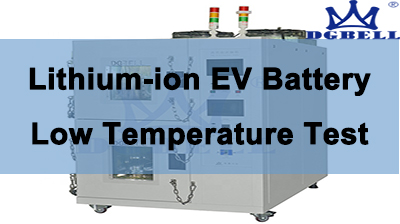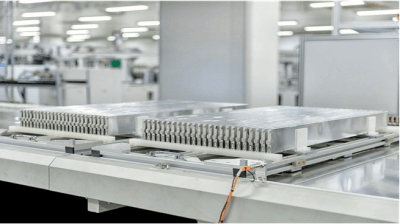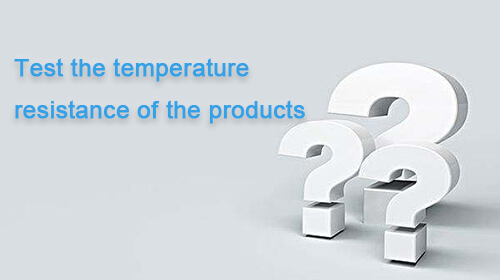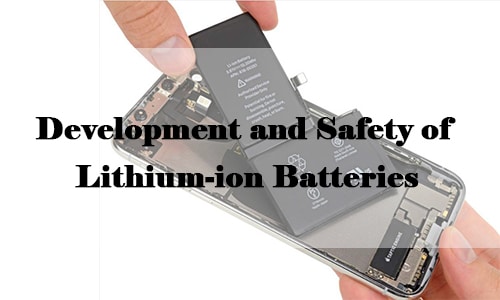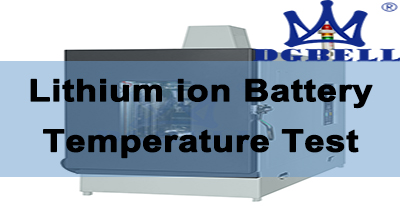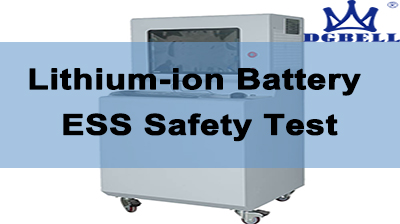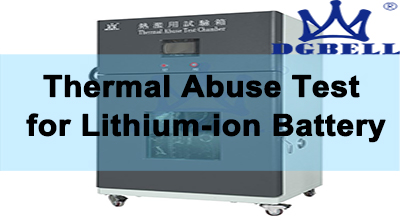Bài viết mới
Thử nghiệm nhiệt độ pin Lithium ion
Về An toàn của Pin Lithium EV — Sự thoát nhiệt
Categories
- Tin Tức 1
- Tin Tức Công Nghệ 234
- Tin Tức Công Ty 13
- Triển Lãm 10
Nội dung chính

As a type of reliability test, environmental test has developed into a method to predict how the product environment affects the performance and function of the product. In other words, environmental tests are used to assess the degree of environmental impact on products before they are put into the market. When the function of the product is affected, the environmental test is used to find out the cause and take measures to protect the product from the environmental impact in order to maintain the reliability of the product. These tests have gone far beyond their original purpose. Now they are widely used in the research and development of materials and products, various inspections in the production process, inspection before transportation and quality control after transportation. They are also used to analyze the defects in the actual use of products and the improvement of new products. Environmental test is very effective for testing methods and maintaining product reliability.
The environmental test we are talking about here is in a narrow sense, and actually refers to the artificial simulated environmental test (hereinafter referred to as environmental test). Generally speaking, environmental tests can be divided into three categories: “natural exposure test”, “artificial simulation test” and “field operation test”. The natural exposure test is to test the samples exposed to the natural environment for a long time. Field operation test is to test the sample device in a variety of typical use sites and make it in normal operation state. These two kinds of tests can directly reflect the performance and reliability of products in actual use, and are also the basis of verifying the accuracy of artificial simulation test. However, the test cycle is long, and it costs a lot of manpower and material resources, and the former test conditions can not be controlled, which affects the reproducibility of the test, and sometimes can not keep up with the development of the product; The data feedback of the latter is slow. Therefore, in order to identify the adaptability of products to the environment in a short time, artificial simulated environmental test is often used in scientific research and production, that is, to simulate the role of one or more environmental factors in the laboratory test equipment (chamber or room), and to be appropriately strengthened. The determination of the test conditions of artificial simulation test requires that it can not only simulate the authenticity of the main factors in the environment, but also play a certain accelerating role in time, but the degree of acceleration should not change the law of the actual damage mechanism of the product. Therefore, the test conditions and methods of artificial simulation test must be organically related to the grade and value of product environmental conditions.
Of course, the use of environmental testing equipment can not accurately reproduce the product environment and simulate all the environmental factors, so we must understand the limitations of environmental testing. The environmental test composed of a single factor (temperature, humidity, pressure, vibration, shock or a substance such as salt) is called simple environmental test. In fact, it is very difficult to produce a completely single environment, and most of the test environments are very complex. Therefore, when designing test conditions, the testers need to choose the most important environmental factors which have the greatest impact on the products. Therefore, environmental test can only be a human environment which is very different from the real environment. Generally, the defects of the product are caused by the following aspects:
- The concentration and diversity of raw materials, friction, wear, stress, heat, current and electric field strength will affect the performance of some aspects of the product.
- Factors caused by product characteristics (raw materials, manufacturing processes, structural parts and mass production) in the process of product design and manufacturing.
- Stress produced by the external environment.
Therefore, the test conditions must be determined according to the specific product conditions, which are different for different products. If the products under test and study have changed, the corresponding environmental tests should also be changed.
Temperature Stress
Environmental stress conditions can cause product failure. The failure caused by temperature and humidity environmental stress accounts for about 60% of all environmental stress induced failure, and there is a close relationship between temperature stress and failure.
At present, all over the world, no matter from land to sea or from high altitude to space, electronic and electrical products and other fields are widely used. Because the temperature decreases with the increase of altitude, or in high latitude areas in winter, or some products are located close to refrigeration elements, equipment or systems, or some products themselves include refrigeration elements, equipment or systems, resulting in low temperature environment. Low temperature will have harmful effects on almost all materials to different degrees. The physical and electrical properties of all kinds of materials that constitute the product will change, which will lead to the temporary or permanent performance decline, even failure.
Similarly, the natural high temperature in low latitude tropical areas, the increase of solar radiation, the temperature rise caused by poor ventilation, and the temperature rise caused by the self heating of heat dissipation samples in use will reduce the reliability of electronic combination, and the seals, rubber parts and plastic parts of mechanical structure will rapidly age and deteriorate under high temperature and solar irradiation, The structure, physical properties and electrical properties of other materials will also change greatly, which will lead to temporary or permanent damage and performance changes.
In addition, in the process of product storage, transportation, use and installation, in addition to the change of natural climate, we will also encounter the change of environmental temperature caused by human social practice. For example, the equipment moves from the indoor with higher temperature to the outdoor with lower temperature; Or move from the outdoor with relatively low temperature to the indoor with relatively high temperature; Or the equipment used outdoors will suddenly rain or soak in cold water after strong solar radiation; Or the extremely high temperature causes solder reflow, or the temperature of the surrounding devices increases rapidly when the motor is started, and the temperature of the surrounding devices will drop suddenly when the motor is closed; Or the device may be connected to the power supply in a low temperature environment, resulting in a steep temperature gradient inside the device. Cutting off the power supply in a low temperature environment may lead to a steep temperature gradient in the opposite direction inside the device; Or when the aircraft takes off or lands, the temperature of the external equipment on the aircraft may change sharply, etc. Due to the rapid temperature change, the product will be subject to a certain thermal impact force, which will cause the coating layer of electronic and electrical components to fall off, the sealing material to crack or even break, and the filling material to leak, thus causing the electrical performance of electronic components to decline; For the products made of different materials, due to the uneven heating when the temperature changes, the products will be deformed, cracked and broken. Due to the large temperature difference caused by the temperature change, condensation or frosting will occur on the surface of the product at low temperature, and evaporation or melting will occur at high temperature. The repeated action of high and low temperature will lead to and accelerate the corrosion of the product.
When the motor is turned off, the temperature of the surrounding devices will drop suddenly; Or the device may be connected to the power supply in a low temperature environment, resulting in a steep temperature gradient inside the device. Cutting off the power supply in a low temperature environment may lead to a steep temperature gradient in the opposite direction inside the device; Or when the aircraft takes off or lands, the temperature of the external equipment on the aircraft may change sharply, etc. Due to the rapid temperature change, the product will be subject to a certain thermal impact force, which will cause the coating layer of electronic and electrical components to fall off, the sealing material to crack or even break, and the filling material to leak, thus causing the electrical performance of electronic components to decline; For the products made of different materials, due to the uneven heating when the temperature changes, the products will be deformed, cracked and broken. Due to the large temperature difference caused by the temperature change, condensation or frosting will occur on the surface of the product at low temperature, and evaporation or melting will occur at high temperature. The repeated action of high and low temperature will lead to and accelerate the corrosion of the product.

